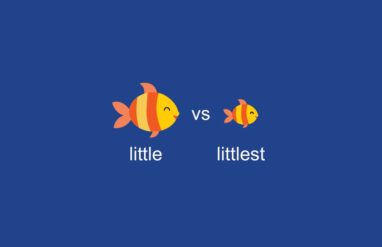It’s easy to confuse viruses and bacteria. They are both extremely tiny, for one thing, and, depending on what kind of bug you get, they can make you sick.
OK, “extremely tiny” and “make you sick”? We do have technical words for these things. Viruses and bacteria are microscopic, meaning they are too small to see with the unaided eye. And pathogens are “disease-producing agents,” especially viruses and certain kinds of bacteria.
But, there are many differences between viruses and bacteria too—and they’re not just important to know to ace your science exams. These differences can be vital to your health and safety.
What is a virus?
Here’s our full, formal definition of virus:
A virus is an ultramicroscopic (20 to 300 nm in diameter), metabolically inert, infectious agent that replicates only within the cells of living hosts, mainly bacteria, plants, and animals: composed of an RNA or DNA core, a protein coat, and, in more complex types, a surrounding envelope.
Virus, explained in everyday words, is an extremely tiny particle that causes an infectious disease. It is generally made up of some RNA or DNA coated in protein. It can only multiply in the cell of hosts that are alive. That means, technically, viruses are not themselves living.
In informal contexts, virus is also commonly used to refer to the disease caused by the virus. And of course, virus has another special meaning when it comes to computers.
Where does the word virus come from?
The word virus entered English around 1590–1600. It comes directly from the Latin vīrus, meaning “slime, poison.”
The adjective virulent is also ultimately derived from the Latin vīrus. In medical and scientific settings, virulent specifically means “highly infective” or “causing clinical symptoms.” More generally, virulent can mean “actively poisonous,” “violently hostile,” or “intensely bitter.”
What does bacteria mean?
Our full, formal definition of bacteria:
Bacteria are ubiquitous one-celled organisms, spherical, spiral, or rod-shaped and appearing singly or in chains, comprising the Schizomycota, a phylum of the kingdom Monera (in some classification systems the plant class Schizomycetes), various species of which are involved in fermentation, putrefaction, infectious diseases, or nitrogen fixation.
Bacteria explained in everyday words:
One-celled organisms that sometimes cause infectious diseases but, very often, are essential to keeping us healthy or are harmless. They come in three shapes, resembling a sphere, spiral, or rod.
We generally refer to bacteria just like that: bacteria. But note that bacteria is technically the plural form of the singular bacterium. (You can blame that on Latin.) You might need to use bacterium when discussing the specific kind of bacteria that causes a disease, such as Yersinia pestis, which causes the plague.
Where does the word bacteria come from?
Bacteria is first recorded in English around 1905–10. Bacterium is older, evidenced by 1840–50. Both words ultimately come, via Latin, from the Greek baktēría, meaning “staff.”
Remember how we mentioned that bacteria come in three shapes? The Greek baktēría is related to the Latin word bacillus, a name for rod-shaped bacteria. Sphere-shaped bacteria are also referred to as coccus (cocci in the plural; again, thanks Latin). You may have encountered coccus in streptococcus, which can cause strep throat.
What are some other differences between a virus and bacteria?
As we noted in the intro, a pathogen is an agent that can cause a disease, especially a virus or bacterium. Some fungi and algae can be pathogenic, too.
Viruses cause infection, and those infections very often result in disease. Bacteria can sometimes cause infectious disease, too, but a great deal of bacteria are completely harmless or even beneficial. (Think of all those good bacteria you’re supposed to get from yogurt.)
Because viruses aren’t technically alive, they also aren’t technically microorganisms. A microorganism is “any organism too small to be viewed by the unaided eye, as bacteria, protozoa, and some fungi and algae.”
Another word for a microorganism is a microbe. However, microbe is often used specifically to refer to pathogenic (disease-causing) bacteria. And because viruses are microscopic and infectious, they are also sometimes referred to as microbes. An everyday term for microbes is germs.
Yeah, we know it’s confusing. Language—just as life—can get messy.
Vaccine vs. antibiotics
Another area of difference between viruses and bacteria concerns what treats them.
Both vaccines and antibiotics are used to treat infectious diseases. There are vaccines that work against both viruses and bacterias. Antibiotics, however, only work against bacteria and other microorganisms.
What does vaccine mean?
A vaccine is any preparation used as a preventive inoculation to confer immunity against a specific disease, usually employing an innocuous form of the disease agent, such as killed or weakened bacteria or viruses, to stimulate antibody production.
What does antibiotic mean?
An antibiotic is any of a large group of chemical substances, as penicillin or streptomycin, produced by various microorganisms and fungi, having the capacity in dilute solutions to inhibit the growth of or to destroy bacteria and other microorganisms, used chiefly in the treatment of infectious diseases.
What are different types of viruses?
COVID-19 is the disease caused by the novel coronavirus. Coronavirus is a family of viruses that includes SARS and MERS.
The flu is also caused by viruses, but the novel coronavirus is not the flu. There are many types of flus. Different strains of what’s known as the H1N1 virus have caused some particularly lethal pandemics, including the 2009 swine flu and 1918 pandemic flu, commonly referred to as the Spanish flu.
There are many types of other viruses that you have probably heard of, notably hantavirus and HIV. Some diseases caused by viruses include chickenpox, Ebola, polio, and smallpox. Seasonal flus and, yes, the common cold are viral infections, too.
What does flu mean?
The word flu is short for influenza—borrowed from Italian and from the same Latin root that gives English the word influence. Formally defined, influenza is an acute, commonly epidemic disease, occurring in several forms. It is caused by numerous rapidly mutating viral strains and characterized by respiratory symptoms and general prostration.
General prostration? That’s another way of saying “I just can’t get out of bed.” And on that note, stay safe, stay at home when you can, and wash your hands. That will help you, and others, avoid general prostration—or worse.













